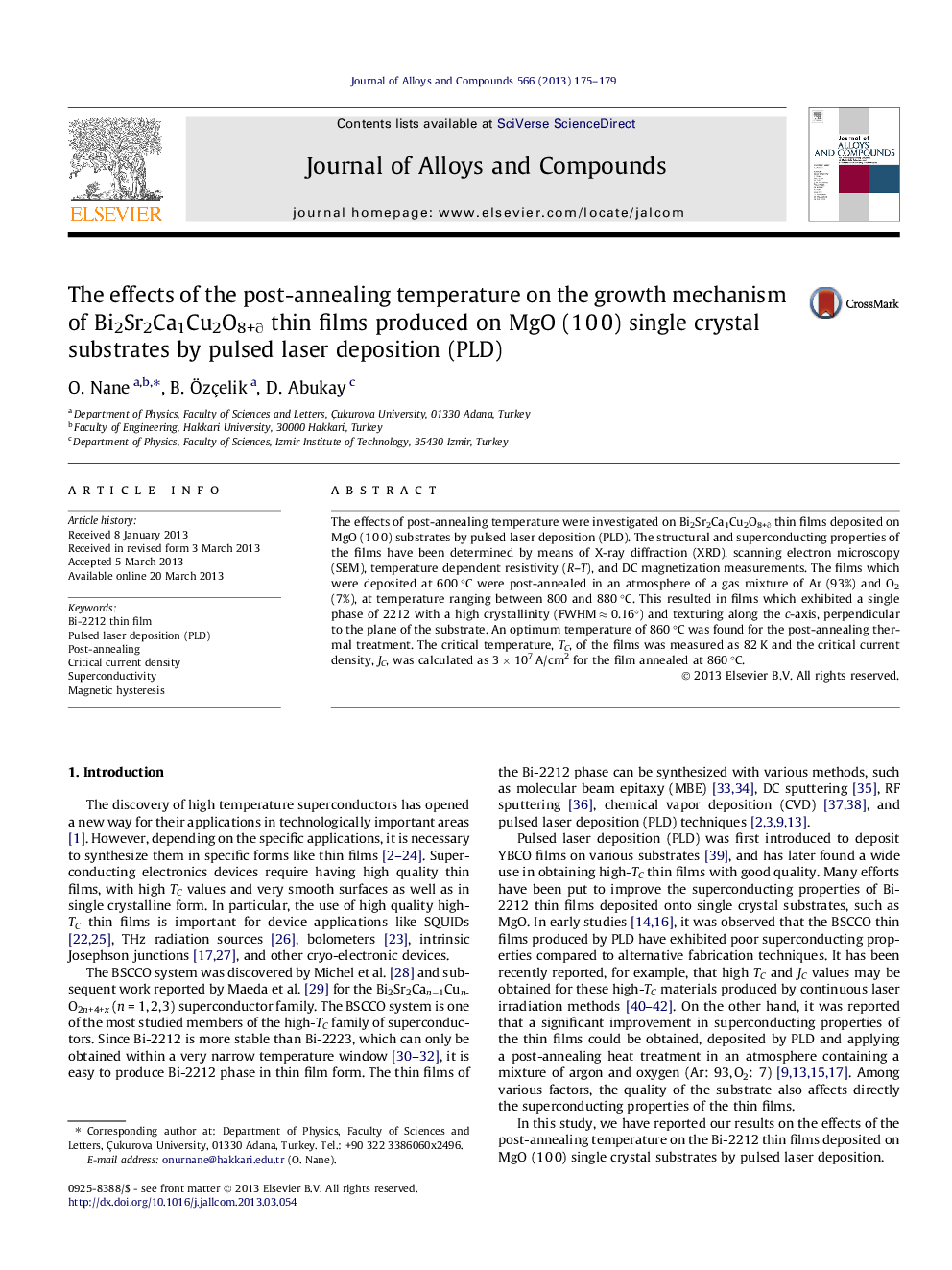| Article ID | Journal | Published Year | Pages | File Type |
|---|---|---|---|---|
| 1614083 | Journal of Alloys and Compounds | 2013 | 5 Pages |
• We have studied the effects of post-annealing temperature on the growth mechanism of Bi2Sr2Ca1Cu2O8+∂ thin films. • The films have been deposited on MgO (1 0 0) by PLD technique. • All main peaks of thin film grown at 860 °C were constructed on the (0 0 l) lines of Bi-2212 phase (FWHM ≈ 0.16°). • Best TC has been obtained as 82 K from M–T results for film annealed at 860 °C (Tc.offset: 89 K from R–T).
The effects of post-annealing temperature were investigated on Bi2Sr2Ca1Cu2O8+∂ thin films deposited on MgO (1 0 0) substrates by pulsed laser deposition (PLD). The structural and superconducting properties of the films have been determined by means of X-ray diffraction (XRD), scanning electron microscopy (SEM), temperature dependent resistivity (R–T), and DC magnetization measurements. The films which were deposited at 600 °C were post-annealed in an atmosphere of a gas mixture of Ar (93%) and O2 (7%), at temperature ranging between 800 and 880 °C. This resulted in films which exhibited a single phase of 2212 with a high crystallinity (FWHM ≈ 0.16°) and texturing along the c-axis, perpendicular to the plane of the substrate. An optimum temperature of 860 °C was found for the post-annealing thermal treatment. The critical temperature, TC, of the films was measured as 82 K and the critical current density, JC, was calculated as 3 × 107 A/cm2 for the film annealed at 860 °C.
